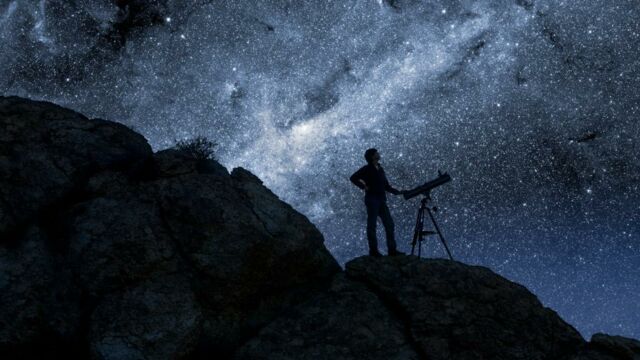From meteor showers to blood moons: Here’s all you need to know about the night sky events in November

Just like the month before it, November will be full of astronomical events. From shooting star showers to blood moons, here are the ones you don't want to miss.
Once again, astronomy enthusiasts will be in for a treat over the next few days. After the various shooting star showers in October like Draconids, epsilon-Geminids and Orionids, other astronomical events of the same type can be expected. In November, the Earth's natural satellite will also be in the spotlight and will even temporarily take on a nice reddish hue!
Discover our latest podcast
The Southern Taurids meteor shower on 4 November
The first meteor shower of November will be the Southern Taurids. It is active from 10 September to 20 November and will peak on the night of 4-5 November! This meteor shower is associated with comet 2P/Encke, which was discovered by the French astronomer Pierre Méchain in 1786.
More under this adMore under this adThe Southern Taurids meteor shower will be rather minor, as 'only' 5 meteors per hour are expected.
The Northern Taurids meteor shower on 11 November
This will be followed by the Northern Taurids meteor shower! Like the previous one, this shower is associated with comet 2P/Encke. Active from 20 October to 10 December, this event will reach its peak on the night of 11-12 November. It will also be small in scale, with only a handful of meteors per hour to be expected.
But by the way, do you know why they are called 'Taurids'? No, it's not because of the Taurus astrological sign or because their meteors will be particularly hot, but simply because they appear to come from the constellation Taurus!
More under this adMore under this adThe Leonid meteor shower on November 17
The Leonid meteor shower will undoubtedly be the most impressive astronomical event of the month! Indeed, this one could have a record number of meteors per hour, although nothing is certain. In a statement issued on 12 October 2021, NASA issued its 2022 forecast and said that the Leonids meteor shower could have peaks of 50 to over 200 meteors per hour.
Active from 6 to 30 November, it will peak on 17 November. Make sure you bring your own equipment, as it could be an unforgettable event.
The Alpha Monocerotid meteor shower on 20 November
On 20 November, the Alpha Monocerotid meteor shower can be seen, although it is shrouded in mystery. The comet with which it is associated is uncertain (it could be 1943 W1) and its rate of meteors per hour is variable.
More under this adMore under this adWhile Alpha Moncerotides are generally quiet, they sometimes have 'bursts' during which more than 400 meteors per hour are visible!
The Beaver Moon of 8 November
If all these shooting stars are not enough for you, you should know that the Moon will also be in the spotlight over the next few days. On November 8, the Beaver Moon will take place, a full moon named after this rodent that starts to stock up on food at this time of year, shortly before winter.
More under this adMore under this adThe Beaver Moon will also coincide with a total lunar eclipse! That evening, the moon will take on a very nice reddish hue. Unfortunately, it can only be viewed from a few specific locations in the world.
This article was translated from Gentside FR.
Sources used:
-NASA: The 2022 meteor shower activity forecast for low Earth orbit